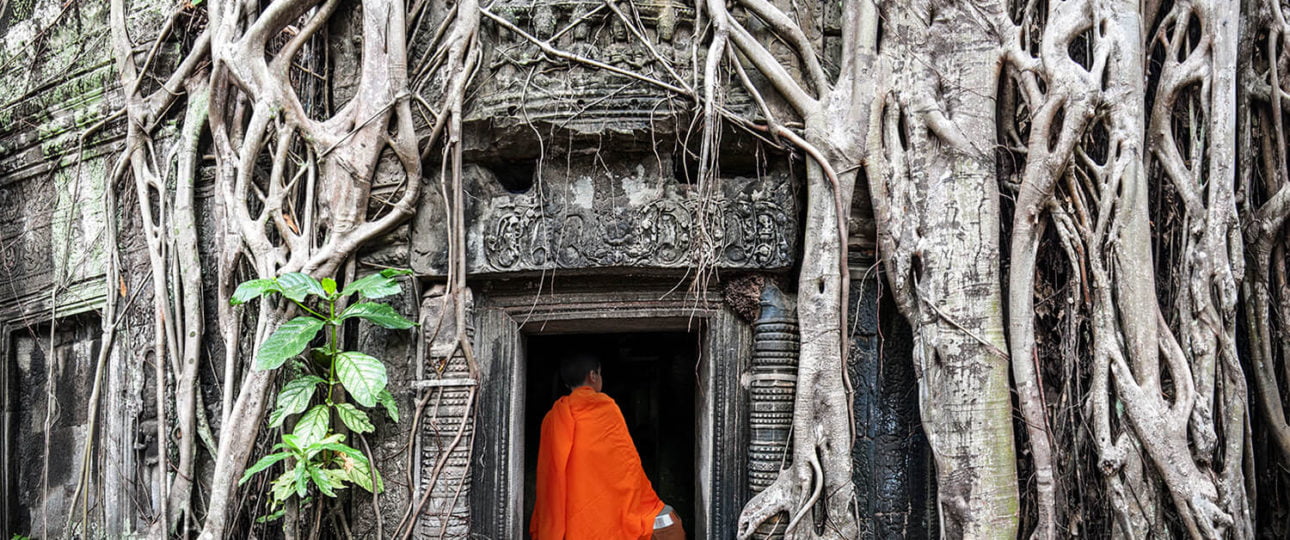The fact that you can still see the history of Angkor Wat today as it was in the glory days of the ANGKOR empire shows in itself that is up there with any of the great historical sites on earth…
While visiting Cambodia you will find that just being there is the best part although the more famous historical sights are probably what attracted you in the first place. And the two main ones are centuries apart so totally different as you experience first hand.
Literally translated to Temple City. It is the largest religious monument in the world.
One of the first Western visitors to the temple was Antonio da Madalena, a Portuguese friar who visited in 1586 and said that it “Is of such extraordinary construction that it is not possible to describe it with a pen, particularly since it is like no other building in the world. It has towers and decoration and all the refinements which the human genius can conceive of.”
In the mid-19th century, the temple was effectively rediscovered by the French naturalist and explorer Henri Mouhot, who popularised the site in the West through the publication of travel notes, in which he wrote:
“One of these temples, a rival to that of Solomon, and erected by some ancient Michelangelo, might take an honourable place beside our most beautiful buildings. It is grander than anything left to us by Greece or Rome and presents a sad contrast to the state of barbarism in which the nation is now plunged.
ANGKOR WAT:
Originally constructed as a Hindu Temple dedicated to Shiva for the Khmer Kingdom it was gradually transformed into a Buddhist temple towards the end of the 12th century. This continues today.
It was built by the Khmer king Suryavarnman 11 in the early part of the 12th century.
This period was when Khmer genius was at its best. It covers 500 acres, (200 hectares), in total and was once the biggest city on earth with over a million people. Considering that all of Cambodia today only has 16 million people you can get a picture of how great it was.
While Angkor Wat temple itself and a few other big boys are the main focus today, you could take weeks to explore the entire complex of hundreds of other temples. One of the great Human masterpieces in history. Standing in front of Angkor Wat itself surely must be one of the most awesome travel experiences you can get.
The other main temples, not to be missed that can be visited in a day or so are:
ANGKOR THOM; (1181 to 1219), even bigger than Angor Wat this is the one that is best described as epic.(10 sq kilometres in total) It was built after the Chams ransacked Angkor Wat and King Jayavarman V11 decided a fortified city was needed. Centred on the Bayon with its the 216 intricately carved smiling faces. Legend has it that the faces were there so the king could keep an eye on everything.
TA PROHM: (built from 1186)
After Angkor Wat itself, this is probably the most atmospheric. It is the Indiana Jones experience with the giant tree roots system encompassing much of the crumbling structures looking undisturbed by time. Although some human cosmetic touches have occurred to stop the jungle surge. At its peak, almost 80,00 people were needed to maintain and attend to it with over 2,000 officials and 600 dancers.
Those with extra time may like to visit the tiny but no less intricate Banteay Srei among many others.
Lastly, after seeing all these amazing human creations you can visit the latest addition to the city of the Landmine Museum to see the worst of what humans have created. After almost 1,000 years it is here you will see we have only gone backwards in so many ways.
he final fall of Angkor in the 15th century was due to the transfer of economic – and therewith political significance, as Phnom Penh became an important trade centre on the Mekong. Besides, severe droughts and ensuing floods were considered as one of the contributing factors to its fall.
Then after all the exciting exploration, there is the not so sleepy anymore Siem Reap to celebrate the day. Now geared up to mass tourism after only a decade or two ago when it was a small village for the more adventurous traveller.
Siem Reap has advanced in recent history much faster than Angkor did. The aptly named Pub Street is one of the most popular of the modern historical places to relax after experiencing some of Angkor Wat’s history after a hot day of discovery. Will “IT” still be there in 800 years time though?



